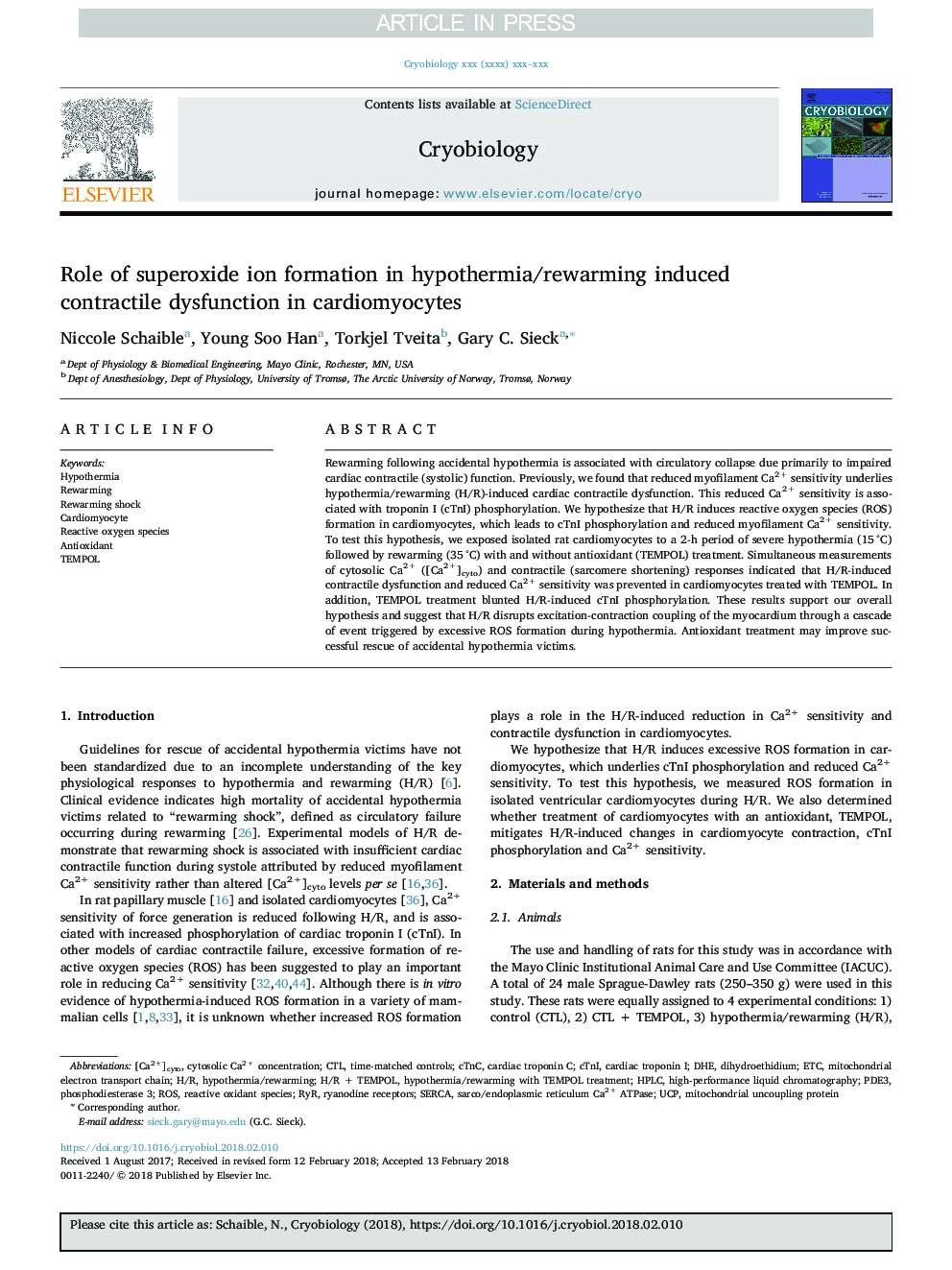| کد مقاله | کد نشریه | سال انتشار | مقاله انگلیسی | نسخه تمام متن |
|---|---|---|---|---|
| 8464126 | 1549438 | 2018 | 8 صفحه PDF | دانلود رایگان |
عنوان انگلیسی مقاله ISI
Role of superoxide ion formation in hypothermia/rewarming induced contractile dysfunction in cardiomyocytes
ترجمه فارسی عنوان
نقش تشکیل یون سوپر اکسید در اختلال انقباض ناشی از هیپوترمی / گرم شدن در قلب بیماران قلبی
دانلود مقاله + سفارش ترجمه
دانلود مقاله ISI انگلیسی
رایگان برای ایرانیان
کلمات کلیدی
Mitochondrial uncoupling proteinPDE3CTLsarco/endoplasmic reticulum Ca2+ ATPaseUCPcTnIRyRH/R - H / RROS - ROSAntioxidant - آنتی اکسیدانcTnC - ایتناcardiac troponin C - تروپونین C قلبRewarming - حرارت دادنdihydroethidium - دی هیدروتیدیمmitochondrial electron transport chain - زنجیره حمل و نقل الکترون الکترونیک میتوکندریTempol - سریعCytosolic Ca2+ concentration - غلظت Ca2 + سیتواستولیPhosphodiesterase 3 - فسفودی استراز 3SERCA - قلبcardiac troponin I - قلب تروپونین ICardiomyocyte - قلب و عروقHypothermia - هیپوترمیDHE - وETc - و غیرهhigh-performance liquid chromatography - کروماتوگرافی مایعی کاراHPLC - کروماتوگرافی مایعی کاراReactive oxidant species - گونه های اکسنده واکنشیReactive oxygen species - گونههای فعال اکسیژنRyanodine receptors - گیرنده های رایانودین
موضوعات مرتبط
علوم زیستی و بیوفناوری
علوم کشاورزی و بیولوژیک
علوم کشاورزی و بیولوژیک (عمومی)
چکیده انگلیسی
Rewarming following accidental hypothermia is associated with circulatory collapse due primarily to impaired cardiac contractile (systolic) function. Previously, we found that reduced myofilament Ca2+ sensitivity underlies hypothermia/rewarming (H/R)-induced cardiac contractile dysfunction. This reduced Ca2+ sensitivity is associated with troponin I (cTnI) phosphorylation. We hypothesize that H/R induces reactive oxygen species (ROS) formation in cardiomyocytes, which leads to cTnI phosphorylation and reduced myofilament Ca2+ sensitivity. To test this hypothesis, we exposed isolated rat cardiomyocytes to a 2-h period of severe hypothermia (15â¯Â°C) followed by rewarming (35â¯Â°C) with and without antioxidant (TEMPOL) treatment. Simultaneous measurements of cytosolic Ca2+ ([Ca2+]cyto) and contractile (sarcomere shortening) responses indicated that H/R-induced contractile dysfunction and reduced Ca2+ sensitivity was prevented in cardiomyocytes treated with TEMPOL. In addition, TEMPOL treatment blunted H/R-induced cTnI phosphorylation. These results support our overall hypothesis and suggest that H/R disrupts excitation-contraction coupling of the myocardium through a cascade of event triggered by excessive ROS formation during hypothermia. Antioxidant treatment may improve successful rescue of accidental hypothermia victims.
ناشر
Database: Elsevier - ScienceDirect (ساینس دایرکت)
Journal: Cryobiology - Volume 81, April 2018, Pages 57-64
Journal: Cryobiology - Volume 81, April 2018, Pages 57-64
نویسندگان
Niccole Schaible, Young Soo Han, Torkjel Tveita, Gary C. Sieck,
